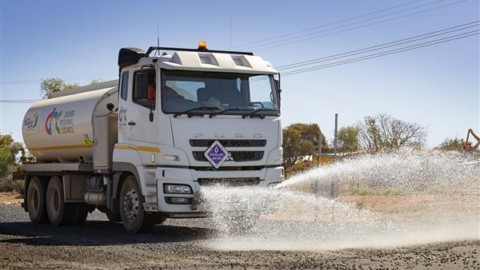A new mechanical joining solution from Victaulic offers outstanding performance capabilities for high density polyethylene pipes. High density polyethylene (HDPE) is lightweight, corrosion-resistant, flexible, long-lasting and economical, so it’s an ideal material for underground buried and outdoor exposed pipelines.
High density polyethylene (HDPE) is lightweight, corrosion-resistant, flexible, long-lasting and economical, so it’s an ideal material for underground buried and outdoor exposed pipelines.
While HDPE poly has been available for over 50 years, recent adoption of the piping material is quickly replacing steel, concrete and ductile iron piping. It is the fastest-growing piping material in civil works and water transport infrastructure applications, with adoption expected to increase by 5 per cent per year.
In response to this trend, Victaulic, the world’s leading producer of mechanical pipe joining solutions, has developed the Refuse-to-Fuse™ system, a mechanical joint for HDPE piping. Strong and durable, the solution is changing the way we think about fusion practices.
For years, butt fusion and electrofusion have been considered the top joining methods for HDPE piping. There are common misconceptions about the performance capabilities of fusion; until now, it has been widely accepted as the easiest, most efficient method for joining HDPE pipe. But a new mechanical joining solution from Victaulic is now changing the landscape.
Here are the top myths about the performance of fusion compared to mechanical joining.
Myth one: fusing is faster
The Refuse-to-Fuse system cuts crew downtime on-site so you can finish projects ahead of schedule. It can be installed up to ten times faster than fusing, while providing a consistent joint every time.
Through the simple act of tightening two bolts and nuts, there is no need for expensive fusing equipment, power sources or certified fusion installers.
There’s also no need to spend time heating and cooling pipe ends. Finally, without the need for complex equipment, mechanical joints can be quickly installed in tighter spaces and places that traditional fusing gear can’t reach.
Myth two: fusing is stronger
Refuse-to-Fuse products meet or exceed HDPE pressure ratings. That means an HDPE pipe is likely to fail under pressure before a properly installed Refuse-to-Fuse joint.
So you can push, pull and drag your pipe like any fused solution. The solution is specifically designed with strength and durability in mind and meets other common job site requirements, such as allowable tensile load and minimum bend radius.
Myth three: mechanical joints can’t be buried
Victaulic mechanical joints for HDPE pipe are designed for buried services, and are perfect for underground civil works and water transport infrastructure applications. With a range of industry-accepted coatings, the Refuse-to-Fuse system is protected from the harsh underground environment.
Myth four: mechanical solutions are expensive
While fusing may require hundreds of thousands of dollars-worth of equipment – depending on the size range of the project – the Refuse-to-Fuse solution eliminates the need for capital purchase and maintenance of these tools.
Plus, because mechanical joining is faster and easier to install, projects can save on labour costs with fewer man hours required and no need for specially-certified workers.
Overall, comparative studies of mechanical and fused projects have shown the Refuse-to-Fuse solution to be a competitively priced option.
This partner content is brought to you by Victaulic. For more information, visit [email protected].











